MRSA sepsis following clandestine intravenous infusion

Intravascular devices aid in drug administration and fluid replacement for hospitalized patients and are thus an integral part of modern medical care; however, poor aseptic technique and improper manipulation of infusion devices increase the risk of infections secondary to catheterization that can progress to sepsis and septic shock” Abernathy et al (2019). Abstract: Intravascular devices […]
Presentation of a central venous catheter misplacement case

Placement was performed under ultrasound guidance, with confirmation of the wire within the venous lumen. Radiographs suggested that the introducer had perforated the innominate vein. Contrast was injected through the single-lumen infusion catheter and showed cannulation of the left internal mammary vein” Tashjian et al 92019). Abstract: We present a central venous catheter misplacement case. […]
Peripheral intravenous access for extracorporal photopheresis
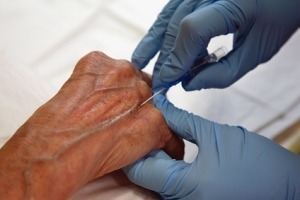
Extracorporal photopheresis (ECP) was shown to be effective without severe side effects in the treatment of cutaneous T cell lymphoma (CTCL) and graft versus host disease (GvHD). However, only few studies investigated the practical aspects of ECP” Hambsch et al (2019). Abstract: BACKGROUND: Extracorporal photopheresis (ECP) was shown to be effective without severe side effects […]
Treatment of cancer-related venous thromboembolism

Cancer patients develop a hypercoagulable state with a four- to seven-fold higher thromboembolic risk compared to non-cancer patients” Grandoni and Alberio (2019). Abstract: Cancer patients develop a hypercoagulable state with a four- to seven-fold higher thromboembolic risk compared to non-cancer patients. Thromboembolic events can precede the diagnosis of cancer, but they more often occur at […]
Financial impact of approaches to reduce bacterial contamination of platelet transfusions
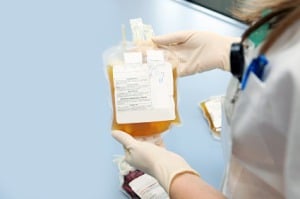
Bacterial contamination of platelets remains the leading infectious risk from blood transfusion. Pathogen reduction (PR), point-of-release testing (PORt), and secondary bacterial culture (SBC) have been proposed as alternative risk control strategies, but a comprehensive financial comparison has not been conducted” Kacker et al (2019). Abstract: BACKGROUND: Bacterial contamination of platelets remains the leading infectious risk […]
Continuous etomidate infusion for the management of severe Cushing syndrome

Demonstrate the safety and efficacy of a standardized intravenous etomidate infusion protocol in normalizing cortisol levels in patients with severe and life-threatening hypercortisolism” Carroll et al (2019). Abstract: OBJECTIVE: Demonstrate the safety and efficacy of a standardized intravenous etomidate infusion protocol in normalizing cortisol levels in patients with severe and life-threatening hypercortisolism. METHODS: A retrospective […]
Using Lean methodology to reduce infusion pump errors

Since previous attempts to reduce medication errors with infusion pumps failed in our intensive care unit, we chose the Lean approach to accomplish a 50% reduction of administration errors in 6 months. Besides improving quality of care and patient safety, we wanted to determine the effectiveness of Lean in healthcare” van der Sluijs et al (2019). […]
End of life palliative sedation via intraosseous vascular access

No complications were noted from this route of administration. We advocate the use of IO access in the palliative care of terminal ill patients when a venous cannulation is not possible” Mansfeld et al (2019). Abstract: Intraosseous (IO) access is normally reserved for emergencies and critical care conditions when venous cannulation is not possible. Nonetheless, […]
Contamination of health care personnel during removal of contaminated gloves

In simulations of contaminated glove removal, 37% of health care personnel using their typical doffing technique contaminated their skin with a fluorescent solution” Alhmidi et al (2019). Reference: In simulations of contaminated glove removal, 37% of health care personnel using their typical doffing technique contaminated their skin with a fluorescent solution. The frequency of contamination […]
Review of the dosing and monitoring of vancomycin

We have evaluated the literature to review optimal dosing and monitoring of intravenous vancomycin in adults, in response to evolving understanding of targets associated with efficacy and toxicity” Drennan et al (2018). Abstract: We have evaluated the literature to review optimal dosing and monitoring of intravenous vancomycin in adults, in response to evolving understanding of […]
Review of the safety of intravenous drug delivery systems

The purpose of this conference was to evaluate the safety of intravenous (IV) infusion systems used for medication administration” Rodriguez (2018). Abstract: This review was prepared in advance of the Third Consensus Development Conference on the Safety of Intravenous Drug Delivery Systems that was held at the W Hotel in Chicago, Illinois, from November 1 […]
How to treat extravasation injuries in infants and young children

There is some uncertainty about which are most the promising treatments for extravasation injuries in infants and young children. Saline flush-out techniques and conservative management approaches are commonly used and may be suitable for evaluation in trials” Corbett et al (2019). Abstract: BACKGROUND: Extravasation injuries are caused by unintended leakages of fluids or medicines from […]
Variation of central line infections in United States hospitals

Our descriptive analyses show a wide distribution in rates of central line device days and central line–associated bloodstream infections for a given standardized infection ratio—the measure” Hefner et al (2019). Our descriptive analyses show a wide distribution in rates of central line device days and central line–associated bloodstream infections for a given standardized infection ratio—the […]
Economic burden of chronic diabetic osteomyelitis

Diabetic foot ulcer (DFU) prevalence is as high as 25% and 40-80% of DFUs become infected (DFI). About 20% of infected ulcers will spread to bone causing diabetic foot osteomyelitis (DFO). DFU costs Medicare $9-13 billion/year” Geraghty and LaPorta (2019). Abstract: Diabetic foot ulcer (DFU) prevalence is as high as 25% and 40-80% of DFUs […]
Reducing blood culture contamination using an initial specimen diversion device
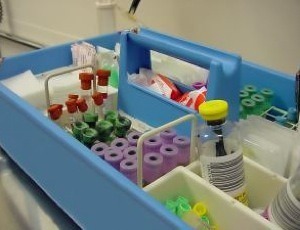
A diversion device diverts the initial 1-2 mL of blood to remove any potentially contaminated skin plug. This study investigates the effect of the device on culture contamination in hospitalized patients” Zimmerman et al (2019). Abstract: Objectives: False positive blood cultures result from contamination, consuming laboratory resources and causing unnecessary antibiotic treatment and prolonged hospital […]
Night optical device technology enables vascular access in blackout conditions

Because definitive surgical care is often delayed until a white light environment is permissible, we sought to determine if night optical device (NOD) technology could enable surgical capabilities in blackout conditions” Derickson et al (2019). Abstract INTRODUCTION: During military combat operations and civilian night-time aeromedical transport, medical providers are frequently required to perform life-saving interventions […]
Report of embolized PICC following power injection

Immediately after the contrast media power injection, the PICC line was embolized to the right segmental pulmonary artery” Vlasenko et al (2019). Abstract: The recent increase in the number of patients with implanted peripherally inserted central catheters (PICCs) requires physicians to be familiar with rare and unusual complication-pinch-off syndrome (POS). We present a case of […]
Hemodialysis vascular access options in the elderly

Choosing the optimal hemodialysis vascular access for the elderly patient is best achieved by a patient-centered coordinated multidisciplinary team approach that aligns the patient’s end-stage kidney disease Life-Plan” Viecelli and Lok (2019). Abstract: Choosing the optimal hemodialysis vascular access for the elderly patient is best achieved by a patient-centered coordinated multidisciplinary team approach that aligns […]
Simulation for clinical preparedness in pediatric emergencies

The aim of this pilot study exploring the outcomes of repeated pediatric mock code simulations with structured debriefing demonstrated statistically significant differences in participants’ knowledge of pediatric emergencies, with no significant decline in resuscitation skills” Mariani et al (2019). Abstract: Positive outcomes for pediatric in-hospital cardiopulmonary arrest remain low with little change in mortality rates. […]
Invasive fungal disease in patients with hematological malignancies

Invasive fungal disease (IFD) is a major infectious complication in patients with hematological malignancies” Wang et al (2018). Abstract: Invasive fungal disease (IFD) is a major infectious complication in patients with hematological malignancies. In this study, we examined 4889 courses of chemotherapy in patients with hematological diseases to establish a training dataset (n = 3500) […]
Closure of common carotid artery perforation caused by misplaced central venous catheter

A 7-year-old boy with medulloblastoma, after neurosurgical resection of an intracranial tumor, was sent for echo-cardiography examination, because of unsuccessful administration of the second course of chemotherapy via the central venous catheter (VascuPort), which was implanted 4 weeks earlier” Paczkowski et al (2018). Extract: A 7-year-old boy with medulloblastoma, after neurosurgical resection of an intracranial […]
Risk factors associated with PICC-related venous thrombosis in patients of advanced age
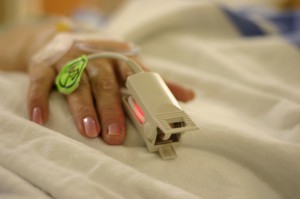
This study was performed to determine the risk factors associated with peripherally inserted central catheter (PICC)-related venous thrombosis in patients of advanced age (>65 years)” Song et al (2019). Abstract: OBJECTIVE: This study was performed to determine the risk factors associated with peripherally inserted central catheter (PICC)-related venous thrombosis in patients of advanced age (>65 […]
Cost of pediatric and neonatal central line-associated bloodstream infections in Greece

CLABSIs were found to impose a significant economic burden in Greece, a finding that highlights the importance of implementing CLABSI prevention strategies” Karagiannidou et al (2019). Abstract: BACKGROUND AND OBJECTIVE: Central line-associated bloodstream infections (CLABSIs) are the most frequent pediatric hospital-acquired infections and are associated with significant morbidity and healthcare costs. The aim of our […]
Effect of early parenteral nutrition discontinuation in neonates

In VLBW infants, early PICC removal at an enteral feed volume of 100 mL/kg/day compared with later removal at 140 mL/kg/day resulted in a significant delay in time to regain birth weight” Perrem et al (2019). Abstract: BACKGROUND: Peripherally inserted central catheters (PICCs) are used to administer parenteral nutrition (PN) in very low birth weight […]
Life-saving vascular access after combined liver and kidney transplantation

We report the case of a boy treated for loss of hemodialysis access after a combined liver-kidney transplantation and transient renal dysfunction” Grimaldi et al (2019). Abstract: Exhaustion of vascular accesses is a major complication in patients undergoing hemodialysis, especially in pediatric setting. We report the case of a boy treated for loss of hemodialysis […]
Clinical outcomes of transfemoral venous access for upper extremity dialysis
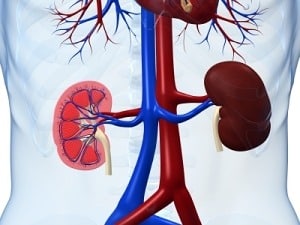
A transfemoral venous approach for intervention of upper extremity dialysis accesses may be a valuable adjunct to traditional approaches” Wang et al (2019). Abstract: PURPOSE: To report technical success and clinical outcomes of transfemoral venous access for upper extremity dialysis interventions. MATERIALS AND METHODS: A total of 15 patients underwent a transfemoral venous approach for […]
Skin metastasis on the puncture site of peripherally inserted central catheter

To report a case of lung cancer metastasizing to skin from peripherally inserted central catheter puncture and to analyze the causes and treatment of this event” Xie et al (2019). Abstract: OBJECTIVE: To report a case of lung cancer metastasizing to skin from peripherally inserted central catheter puncture and to analyze the causes and treatment […]
Ultrasound assisted subclavian central venous catheter insertion

The use of ultrasound for procedural guidance has been demonstrated to further increase the rate of success and reduce the risk of specific mechanical complications, especially in patients with difficult surface anatomy” Millington et al (2019). Abstract: The insertion of a subclavian central venous catheter is generally associated with a high rate of success and […]
Effectiveness of Virtual Reality (VR) as a distraction technique

To evaluate the effectiveness of Virtual Reality (VR) as a distraction technique to help control pain in children and adolescents undergoing venipuncture” Atzori et al (2018). Abstract: Background: Venipuncture is described by children as one of the most painful and frightening medical procedures. Objective: To evaluate the effectiveness of Virtual Reality (VR) as a distraction […]
Outpatient waiting time for phlebotomy departments

When a stand-alone QTS was used in the outpatient phlebotomy clinic, data from the QTS and the LIS were integrated using a novel algorithm we developed” Song et al (2018). Abstract: BACKGROUND: A queue ticket system (QTS) used in an outpatient phlebotomy clinic was unable to be directly integrated with the laboratory information system (LIS). […]

